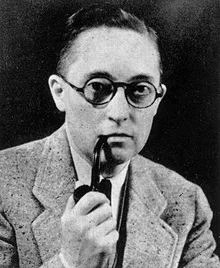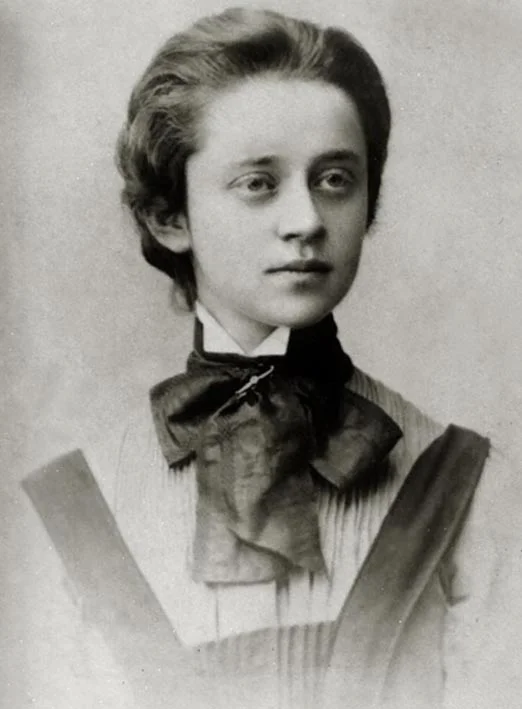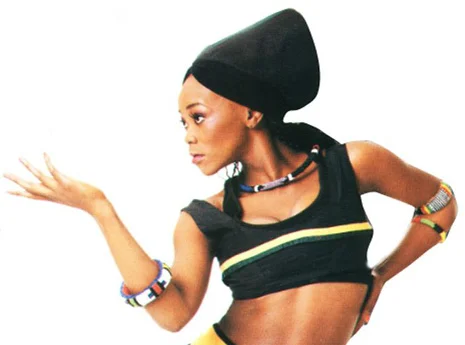The study of queer history, like any study, is complicated. There is a significant amount of nuance that needs to be addressed, and because of this, it can become difficult to come to final answers. It is important to recognize that final answers are not always meant to be reached. This is particularly evident in the case of Alan L. Hart (1890-1962), the doctor and novelist who we look at this week.
Annemarie Schwarzenbach
This week we explore the life and times of a writer, a photographer, a traveler, Annemarie Schwarzenbach an all in one woman. Though her life was rather short, it still managed to be rather full. Born in 1908, she died in 1942, but between those thirty-four years, she was able to find more life and growth than others have throughout their entire lifetime. Growing up in Switzerland through the beginning and growth of World War Two we look at a divided woman in a divided world, and we will explore the nuance of this division with you all now.
Frank Kameny
In 1957, a man named Frank Kameny would go on to lose his position as an astronomer at U.S. Army’s Map Service. He, like many others, was a victim of the Lavender Scare - a menace that destroyed the lives of queer people in the United States. It resulted in dismissal from your station and destroyed hopes of finding another job in your field or any job for that matter. But Kameny, never one to sit down and take anything, protested his treatment. He took his case to the Supreme Court, but his petition got denied. This one act of injustice would start Kameny on a mission. Not to change things for himself, but to change things for his entire community. Some would say he was too radical or militant, and for his time, he most definitely was. But, it’s that kind of radical militancy that helped him change the lives of his people.
Sophia Parnok
For our last article in this year’s women’s history month celebration, we focus on a woman known throughout Russia as one of their first openly lesbian poets. Sophia Parnok was a Jewish poet born in Russia in 1885 and has grown a small reputation for being one of the first out lesbian poets in her home country. Though her work is not widespread, it is impactful. And while the government tried to curb that impact with censorship, today we will work to continue to spread that effect by sharing her story.
Yona Wallach
For the second article in our celebration of women’s history month, we look at the controversial feminist poet, Yona Wallach. Yona Wallach was born in Israel, and she had a significant impact on both the artistic and political climate of the country, partly due to never leaving the country. She used her poetry to challenge the borders of gender and sexuality, often touching on more taboo content, and because of this we will give a warning before our exploration of her work and life; we will discuss sexual content. If that is something you are not comfortable with for any reason, we will have another article coming out next week.
Bricktop
To wrap up Black History Month, we are going to do another two-part article looking at a woman who was the center of the night scene in Paris during the 20’s. We will look at a woman who was not only talented in her own right, but also fostered the talent of the people around her, and made connections with some of the most incredible rising stars of her day. We will discuss the impact of a woman who was loved by almost everyone she interacted with.
Dwayne Jones
In our third article for Black History Month, we will be moving to a more difficult topic, and discuss the life and murder of Dwayne Jones. Before we begin, we want to give a trigger warning; we will be discussing violent homophobia, transphobia, and death, so anyone who finds those topics potentially triggering- our next article will be out in a couple of days, and we'll make sure to find a happier topic. We will indicate where we explicitly discuss the details of her death with an asterisk when we start, and one when we move on from the details, but there will be discussion around the event for the entire article. Please do what is best for yourself, whatever that may be.
Rotimi Fani-Kayode
As our celebration of Black History Month continues we have the privilege of looking at another incredible black queer person in the queer community’s history: Rotimi Fani-Kayode. As with many of the people, we write about, Rotimi was an artist. A photographer, more specifically, whose work was revolutionary for his time and remains so today.
Brenda Fassie
This week we are excited to begin our celebration of Black History Month! To start, we will be looking at some more recent history, specifically the life and times of Brenda Fassie. Fassie was a South African pop star who gained international fame for her work and for the many media storms that built up around her. She was the niece of the famed activist-turned-president, Nelson Mandela, and also held many of the same political stances throughout her life. A number of her songs were even banned in America. She was incredibly influential during her lifetime, exchanging the safety privacy could have offered her for a dramatically public life. It seems only right that we explore that life now.
Kiyoshi Kuromiya
Hello, all! This is the last article for the month of January and the last article that’s going to be written by Grace – Laura is coming off hiatus in February so Queer History can celebrate Black History Month!
Federico Garcia Lorca
This week we’ll be looking at the life, poetry, and activism of Federico García Lorca. While his romances rarely ended well, Lorca made waves by being unapologetically queer in the face of a vindictive, bigoted, and aggressive Spanish government.
Wilfred Owen
Wilfred Owen was a war poet who served in the First World War; his experiences on the field led not only to the aforementioned mental illness but also to some truly evocative, anti-war poetry and a romance with fellow poet, Siegfried Sassoon.
Virginia Woolf
Virginia Woolf is a complex and problematic character. Like many of the aristocrats of her time, she was deeply racist and anti-semitic. Her queerness does not excuse these prejudices. However, her queerness and struggles with mental illness are still worth exploring. These aspects of her personality, as expressed through her relationships as well as through her writing, allow modern readers of her work to find not a role model, but rather hints of their own struggles in a pillar of the past.
Tamara de Lempicka
When writing an article about an artist, one expects to have some discussion of the art created by the person in question, but in this case, that is going to be avoided. Tamara de Lempicka was a highly controversial artist, and there is no lack of people studying her work, no matter which side they fall on in regards to its worth. But we are not going to be looking at that, as we are not art experts, and have never claimed to be. We are going to be looking instead at her life, and it is an extraordinary one to discuss.















